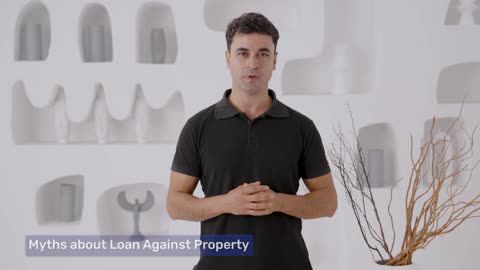What is a statement of encumbrance on property?
A statement of encumbrance on property is an official certificate issued by the local sub-registrar’s office or relevant land revenue authorities, which details any encumbrances attached to a property. Encumbrances refer to any claim, lien, or liability on the property that may impact the rights of the owner. This includes mortgages, unpaid loans, pending legal cases, or any other financial burden that could potentially affect the property’s title.The Statement of Encumbrance serves as a legal proof that the property is free from any claims (or otherwise), ensuring that buyers or lenders are fully aware of any outstanding liabilities before proceeding with the purchase or loan. It is an essential part of due diligence in property transactions. If you are considering taking aloan against property, having a clean Statement of Encumbrance can fast-track the approval process. Lenders prioritise properties with clear titles and no legal disputes, making it easier for you to unlock the potential of your property’s value. This secured loan allows you to access funds while retaining ownership, making it an excellent option for business expansion, education, medical expenses, or debt consolidation. With lower interest rates and flexible repayment terms, loan against property provides a smart way to unlock your property's financial potential. Check your loan against property eligibility in seconds.
Importance of the statement of encumbrance in property transactions
The Statement of Encumbrance holds significant importance in property transactions, whether you are buying, selling, or applying for a loan. Here’s why it matters:Clarity of ownership: It provides a clear understanding of the ownership status of the property and any liabilities attached to it, ensuring that the buyer or lender does not inherit any financial or legal disputes.
Prevents fraud: It safeguards the buyer from fraudulent transactions by confirming that the property title is clear and free from any hidden liabilities.
Loan approvals: Financial institutions require a Statement of Encumbrance before approving loans. It verifies whether the property is legally available for collateral, ensuring there are no existing claims against it.
Legal assurance: It offers legal protection to buyers, making sure that the property transaction is transparent and legitimate.
Risk management: For lenders, it helps assess the risk before advancing funds against the property. It ensures that they are not lending against a property that could have potential legal complications.
A property with unresolved encumbrances might limit your financial options. By obtaining a clear encumbrance statement, you open doors to easier access to financial products like a loan against property. By pledging the value of your own property, you can access large funds —all with flexible repayment options and competitive interest rates. Check our offer on loan against property in just 2 clicks!
Types of encumbrance certificates: Form 15 and Form 16
The Statement of Encumbrance is categorized into two main types, depending on the nature of the property and the timeline of encumbrance records. Here’s a comparison:| Type of form | Description | Use |
| Form 15 | Form 15 is issued when the encumbrance is related to registered properties and involves a historical record of encumbrances over a specified period. | This form is used when the buyer needs to confirm that there have been no encumbrances in the past seven years. |
| Form 16 | Form 16 is issued for properties with registered documents and is a comprehensive record of all encumbrances on the property during a specific period, typically the last 13 years. | Used when the buyer or lender needs more detailed verification of encumbrances over a longer period. |
Both forms are essential for property transactions, especially when applying for loans against property. They provide a complete history of the property, ensuring that all legal matters are resolved before the sale or loan is completed.
Loan against property and the statement of encumbrance
When applying for a loan against property, the lender’s primary concern is whether the property is free from any encumbrances that could affect the loan repayment or lead to legal disputes. A Statement of Encumbrance is a crucial document for lenders in evaluating the property’s value and legal standing. If the property has no outstanding claims, it is considered a safer collateral for the loan. Conversely, properties with existing encumbrances, such as unpaid mortgages or liens, may be rejected by lenders or come with stricter terms.Thus, it is essential for the borrower to obtain a clear and updated Statement of Encumbrance before applying for a loan. This ensures the lender can proceed with the loan approval process confidently. Check your loan eligibility and find out how much you can borrow.
How to apply for a statement of encumbrance on property?
To obtain a Statement of Encumbrance, follow these simple steps:Visit the sub-registrar office: Go to the Sub-Registrar’s office where the property is registered.
Submit application: Fill out the necessary application form, providing details about the property such as registration number, location, and the period for which you want the certificate.
Provide documents: Submit relevant documents like the property deed, identity proof, and address proof.
Pay fees: There is a nominal fee for obtaining the certificate. This fee varies by location and the type of certificate.
Wait for processing: The Sub-Registrar’s office will process the application and issue the certificate after verifying the property details. It may take a few days to a week, depending on the workload.
Receive certificate: Once processed, you will receive the Statement of Encumbrance, confirming whether the property is free from encumbrances or listing any existing claims.
Interpreting the statement of encumbrance: a step-by-step guide
Once you receive the Statement of Encumbrance, understanding it is essential to ensure the property is free from any claims. Here is how to interpret the document:Property details: Check the basic details of the property, such as its location, registration number, and the owner's name.
Encumbrance history: Look for any encumbrances listed. This will include mortgages, loans, or other legal claims.
Period of encumbrance: Review the timeline to determine if any encumbrances have been resolved or are still active.
Existing claims: If there are any claims, ensure that they are resolved, or inquire about their current status before proceeding with the transaction or loan.
Common mistakes to avoid when dealing with encumbrance statements
Not verifying the period: Ensure that the certificate covers the necessary period and includes all past encumbrances.Relying on an outdated certificate: Always request an updated certificate to avoid issues with legal claims.
Overlooking minor claims: Sometimes, small encumbrances like unpaid taxes or minor legal cases may be listed. Don't ignore these; verify their resolution.
Missing documents: Incomplete documentation can delay the process. Ensure you provide all necessary documents for a smooth application.
Legal implications of encumbrances on property ownership
Encumbrances can affect the legal ownership of a property. A property with unpaid loans or unresolved legal disputes may face restrictions on sale or transfer. If you purchase a property with hidden encumbrances, you might be held liable for resolving the claims, including paying off mortgages or legal dues. This could also affect your ability to sell or mortgage the property in the future.Role of encumbrance statements in home loan approvals
When applying for a home loan, the lender assesses the property’s encumbrance status to ensure that the property is free from any liabilities. A clean Statement of Encumbrance significantly improves the chances of loan approval. On the other hand, if the property has outstanding encumbrances, the lender may either deny the loan or offer it under more stringent terms. The encumbrance certificate plays a crucial role in providing transparency to the lender about the property’s legal standing, making it a vital document for loan disbursement.Did you know?You can unlock significant funds by using your property as collateral for a loan while retaining ownership. Ensuring your property is free from encumbrances boosts your chances of securing better loan terms, making it a smart financial move for personal or business needs. Check your loan eligibility now!
Unlocking financial potential with loan against property
Now that you well-versed with statement of encumbrance on property, let us explore your funding options to meet your financial needs. Whether you own a residential or a commercial property,Bajaj Finserv Loan Against Propertyallows you to leverage your real estate for various financial needs, including business expansion, wedding, education financing, or medical emergencies. Enjoy competitive interest rates, flexible repayment plans, quick loan approval, and easyeligibility criteriawith Bajaj FinanceBenefits of Bajaj Finserv Loan Against Property
1. Competitive interest rates:Bajaj Finance offers attractive rates, making borrowing affordable.
2. Fast approval:Experience swift loan approval and disbursal to access funds during urgent situations.
3. Easy eligibility:The qualification process is simple, making loan access hassle-free.
Did you know you may be eligible for our loan against property offers with low-interest rates? Check your offer in just 2 clicks!




